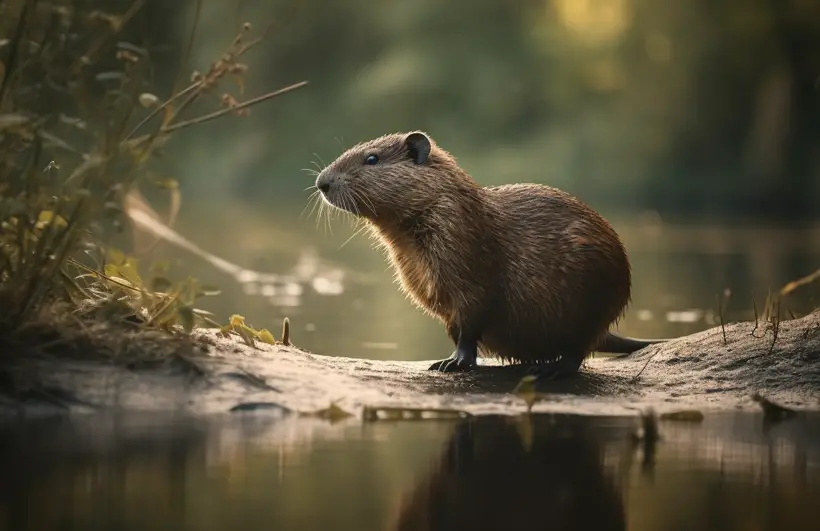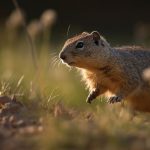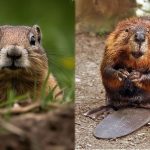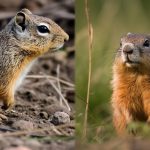Exploring Gopher Behavior in Water: Can Gophers Swim?
Pocket Gophers (geomyidae) are burrowing rodents that are found in North and Central America. There are about 35 different gopher species that occupy the western hemisphere. These small animals are considered pests as they can cause significant damage to lawns, gardens, and agricultural fields.
They do so by burrowing underground and feeding on plant roots and seeds. One of the unique features of gophers is their ability to swim. This unique adaptation allows them to navigate different terrains and seek out water sources, which they use for hydration, also, as a source of food.
Throughout this article, we will assist you in understanding gopher behavior and how it relates to managing these common garden pests. We will also examine the impact of gopher behavior near water sources and its implications for garden pest control. Individuals interested in wildlife management will find this guide helpful.
Can Gophers Swim?
Yes, Gophers can swim; even they can dive. They can hold their breath for up to four minutes underwater.

They are adapted to living in a wide range of environments, from deserts to grasslands to forests. They are primarily terrestrial animals and are known for their excellent digging and tunneling skills. This allows them to move through different types of terrain and seek out water sources.
How do Gophers swim?
Gophers have several adaptations that help them to swim efficiently. Their powerful hind legs, for example, provide the necessary propulsion to move through the water.
Additionally, their long, slender body shape allows them to move quickly through the water, reducing drag and making swimming more energy-efficient.

While gophers can swim, they do not typically spend extended periods in the water. They use water sources for hydration and as a source of food.
Gophers’ swimming capabilities
Among 3 species examined in the laboratory settings, southern pocket gophers are the most enduring swimmers. Perhaps the reason is they live in a hilly area where floods are common. And the rule of nature is survival of the fittest. So, they adjusted themselves to withstand the atmosphere.
In gopher swimming abilities, plain pocket gophers are intermediate swimmers, while yellow-faced pocket gophers possess the least.
How swimming affects gopher pest control and wildlife management?
Gopher swimming behavior can have significant implications for pest control and wildlife management near water. For example, understanding how gophers find water and how they might use it for food can help with trapping and removal efforts.
Gophers will often use water sources as feeding stations, which makes these areas ideal locations for traps. In some cases, gopher behavior around water may make pest control more challenging.

For example, gophers may create burrows along riverbanks or other bodies of water, making it difficult to control infestations in these areas.
Additionally, gophers may swim across bodies of water to establish new colonies in previously uninfested areas.
Gopher Infestation Near Water
Gophers are well adapted to living in arid regions. However, they are also known to inhabit areas with a nearby water source. Gophers living near water sources have a distinct advantage. As they have access to both food and water, their chances of survival increase.
Gophers inhabit near water sources vs drier areas
Gopher infestation near water can be more difficult to control than infestations in drier areas. That’s because gophers near water have an abundant food supply and can dig deeper and more complex burrow systems.
Plus, the soil quality near water sources tends to be softer and easier for gophers to dig in, making it easier for them to create extensive tunnels.
How to identify Gopher infestation?
Gopher infestations near water can be identified by the presence of mounds near water sources, such as streams, ponds, or wetlands. These mounds can indicate the location of gopher burrows.

You may also observe vegetation damage and wilting around water sources, which could be caused by gophers feeding on plant roots and cutting off the water supply.
How to manage gopher infestation near water?
Controlling gopher behavior in water can help with pest control.
- One effective method is to install barriers, such as fences or mesh, around water sources to prevent gophers from accessing them.
- Additionally, regularly monitoring the area for gopher activity and promptly removing any gophers found can help to prevent further infestation.
- Natural pest control methods can also be used to manage gopher infestation near water. Companion planting is one such method. Planting certain plants alongside crops that gophers find unpalatable can help to deter them from feeding on nearby plants.
- Natural pest repellents such as castor oil or garlic sprays can also be used to keep gophers away from your garden or property.
- In severe cases, gopher trapping and removal may be necessary. However, trapping near water sources can be challenging due to the difficulty in locating gopher burrows.
Overall, identifying gopher swimming behavior and monitoring their movement around water sources can help to improve the effectiveness of trapping and removal methods.
Impact of Gopher Swimming on Plant Growth
Gophers have a significant impact on the soil and surrounding vegetation. When gophers swim, they create tunnels underwater, which can change soil quality and water distribution in the surrounding areas.

These tunnels can disrupt the root systems of nearby plants, making them more susceptible to damage and disease. In addition to disrupting soil quality, gopher behavior in water can exacerbate plant damage caused by gopher infestations.
Gophers are herbivorous. They’re known for their voracious appetites, and when they have access to water, they can eat more plants and cause more damage to gardens and lawns.
The impact of gopher swimming on plant growth is direct. The tunnels created by swimming gophers make it harder for plants to get the water they need. This can lead to stunted growth, wilting, and eventually, the death of plants in affected areas.
Furthermore, gopher burrows can also create problems for irrigation systems. Water can seep into the burrows and create wet areas in the soil. This can lead to mold growth and root damage in plants.
Gopher Trapping and Removal Near Water
When dealing with gopher infestations, trapping and removal is a common method used by homeowners and gardeners. However, trapping and removal methods near water may require some special considerations.

One important aspect of gopher trapping near water is identifying the location of gopher tunnels.
- Gophers may use water sources to travel between tunnels, and identifying these tunnels can help to place traps more effectively.
- In addition, traps should be placed in areas where gophers are likely to travel, such as near feeding areas or along the edges of the water source.
- It is also important to monitor traps regularly, especially in areas near water. Water sources can attract other wildlife, such as raccoons or other rodents, which may interfere with gopher-trapping efforts.
- Checking traps regularly can help to ensure that gophers are being caught and that traps are not being interfered with by other animals.
In addition to trapping, other gopher removal methods may also be effective near water sources. For example, using natural predators like owls or snakes may be a viable option in some areas.
Additionally, some homeowners may choose to use natural repellents like castor oil or garlic to deter gophers from the area.
If you’re dealing with gophers on your property, understanding their tunneling behavior is essential. Our articles on how to find gopher tunnels and how deep do gophers dig their tunnels can provide you with valuable insights. The article on how to find gopher tunnels explains how to identify active tunnels and locate the main burrow system. Meanwhile, our article on how deep do gophers dig their tunnels explores the different factors that can affect the depth and complexity of gopher burrows. By understanding gopher tunneling behavior, you can take effective steps to control these pesky rodents and protect your property.FAQs
Here are the answers to some frequently asked questions about gophers and their swimming abilities:
Q: Can gophers swim long distances?
Yes. Gophers can swim long distances, especially when searching for a new habitat or escaping predators. However, their swimming distance may vary depending on the water current and other factors.
Q: How can I prevent gophers from using water sources near my garden or lawn?
You can install barriers or garden fencing around your property to prevent gophers from using water sources near your garden or lawn. Additionally, you can make sure there are no entry points, such as gaps or holes in the fence.
Q: How do gophers behave differently near water than in dry areas?
Gophers near water may behave differently than in dry areas. They may be more active and have a larger range of movement. Also, they may feed on aquatic plants and insects, and their burrow system may be more extensive and complex.
Conclusion
In conclusion, understanding gopher behavior is crucial for effective pest control and wildlife management practices. Answering the question, can gophers swim, we got to know that,
- Gophers can swim and use water sources to find food and moisture
- To mitigate Gopher infestations near water is important
- We can identify wildlife behavior around water sources and use appropriate pest control methods, including trapping and removal, to control gopher infestations near water
- It’s also important to consider natural pest control methods and to improve soil quality and water distribution to support plant growth
By understanding gopher behavior and implementing effective pest control methods, we can reduce the negative effects of gopher infestations and promote healthier garden and lawn ecosystems.




